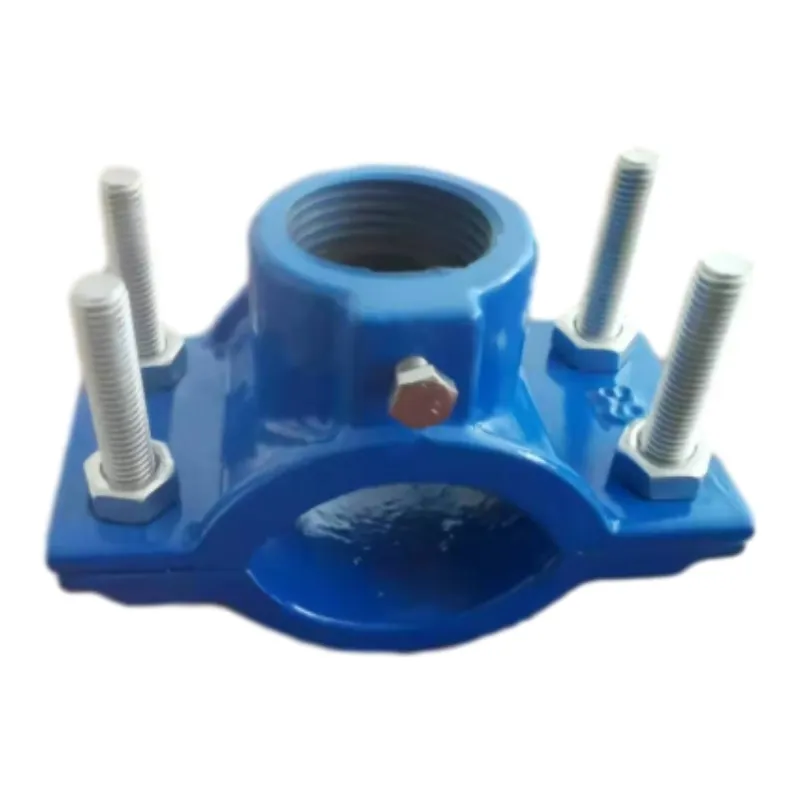Exploring the Features and Benefits of Saddle Clamps for Your Projects
The Importance and Functionality of Saddle Clamps in Modern Engineering
Saddle clamps are essential components in various engineering applications, playing a crucial role in supporting and securing piping systems, electrical conduits, and other installations. These versatile fasteners are designed to hold pipes, cables, or rods in place, ensuring stability and safety within a wide range of environments, from residential settings to industrial complexes.
Understanding Saddle Clamps
A saddle clamp typically consists of a curved base designed to fit the contour of the pipe or object it is securing, along with fasteners that hold it firmly in place. Made from durable materials such as steel, aluminum, or plastic, saddle clamps are engineered to withstand various environmental stresses, including vibration, temperature fluctuations, and corrosion. Their unique design allows for a secure grip while distributing pressure evenly along the surface, minimizing damage and wear to the material being held.
Applications of Saddle Clamps
Saddle clamps find extensive applications across many industries. In plumbing and HVAC systems, they are used to secure water and air ducts, ensuring that installations remain intact even under pressure or movement. In electrical engineering, saddle clamps are instrumental in holding electrical conduits in place, providing organized pathways for wiring in commercial and residential buildings. Their ability to maintain proper alignment and support helps prevent costly repairs and enhances the longevity of installations.
Moreover, saddle clamps are widely used in the automotive industry. They assist in securing fuel lines, brake lines, and various tubing within the vehicle, contributing to overall safety and efficiency. By minimizing vibrations and potential leaks, these clamps play a significant role in ensuring the longevity and reliability of automotive systems.
Benefits of Using Saddle Clamps
saddle clamp

One of the primary benefits of using saddle clamps is their adaptability. They come in various sizes and designs, allowing for customized applications tailored to specific needs. Whether for a small plumbing project or a large-scale industrial operation, there is a saddle clamp suited for the task. Additionally, their ease of installation makes them a favorite among engineers and technicians, saving valuable time and labor costs.
Saddle clamps also promote safety in installations. By securely fastening pipes and conduits, they reduce the risks associated with movement or dislodgement. This is particularly important in environments where vibrations or shifting can occur, such as in manufacturing plants or construction sites. The assured stability that saddle clamps provide contributes to safer work conditions and reduces the potential for accidents.
Challenges and Considerations
While saddle clamps offer numerous advantages, there are considerations that engineers and designers must keep in mind. Selecting the right type of saddle clamp is crucial for the success of any project. Factors such as the material of the pipe, the environment in which the clamp will be used (wet, dry, high-temperature), and the load the clamp needs to support must all be taken into account.
Furthermore, improper installation can lead to failures, including leaks or structural issues. It is essential to follow manufacturer guidelines and industry standards during the installation process to ensure reliability and performance.
Conclusion
In conclusion, saddle clamps play a vital role in the stability and safety of various mechanical and electrical installations. Their versatility, coupled with their ability to provide secure and effective support, makes them an indispensable tool in modern engineering. Whether in residential plumbing, automotive applications, or large industrial settings, saddle clamps contribute to reliable and efficient systems. As engineering challenges continue to evolve, the importance of such foundational components will only grow, highlighting their role in the future of technology and infrastructure.
-
The Smarter Choice for Pedestrian AreasNewsJun.30,2025
-
The Gold Standard in Round Drain CoversNewsJun.30,2025
-
The Gold Standard in Manhole Cover SystemsNewsJun.30,2025
-
Superior Drainage Solutions with Premium Gully GratesNewsJun.30,2025
-
Superior Drainage Solutions for Global InfrastructureNewsJun.30,2025
-
Square Manhole Solutions for Modern InfrastructureNewsJun.30,2025
-
Premium Manhole Covers for Modern InfrastructureNewsJun.30,2025
